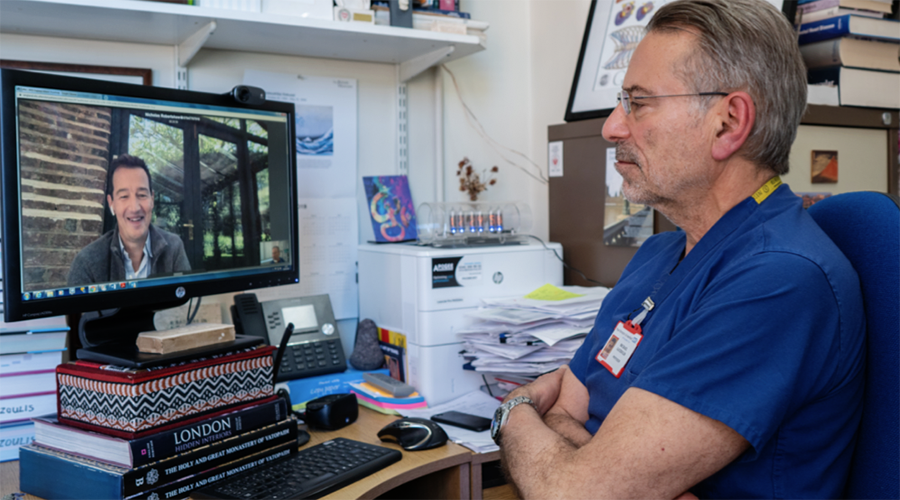To reduce the risk of spreading COVID-19 and provide the safest possible environment for staff and patients, a radical re-think of the way services were delivered took place during 2020.
Patients were only invited into our hospitals for treatment, if clinical teams believed that the benefits of their visit outweighed any risks.
Before the pandemic a new system was under development to enable patients at select clinics to have ‘virtual’ appointments by video, using a secure web-based platform called Attend Anywhere. This fledging project quickly came into its own and was adopted by teams across the Trust.
Given the fact that our clinicians carry out more than 175,000 outpatient appointments every year, the scale of these changes was significant.
Professor Michael Gatzoulis, consultant cardiologist and one of the senior clinicians leading the virtual consultations by video project, said: “While the implementation of this has undoubtedly been fuelled by our response to COVID-19, the benefits to patients are long-term.
“Conducting appointments in this way means we can reduce the need for lengthy journeys, which often take place for routine consultations. We can also facilitate meetings involving clinicians from different organisations and provide our staff with greater flexibility in how they deliver their practice.”

Administering medication at home
IV therapy is medication given intravenously (through the veins) straight into the bloodstream through long flexible tubes called IV lines. Every year, hundreds of patients are admitted for lengthy inpatient stays for IV therapy.
An innovative Home IV therapy programme was accelerated by the COVID-19 pandemic. Patients, parents and carers now only need to make one visit for one day to be taught by our nurses how to give the medication. They can then refer to one of a series of specially created patient information videos and leaflets that provide step-by-step instructions about how to give each type of IV medication.
Patient Spencer Chapman was among the first patients to benefit and is enthusiastic about the programme. He said: “I started having IV therapy seven years ago, every eight weeks taking up a bed for up to 14 days. It was frustrating because the cycle came round so quick.
“Then three years ago the idea of ‘Home IVs’ was put to me. Obviously, it was just an idea then, but a year later I had the opportunity to try the first generation of home IVs, a PICC line (a long, thin, flexible tube that is inserted into a vein so that medicines can be given) in my bicep and a nurse visiting me at home every day. Absolutely brilliant.
“Covid came along and accelerated the process to where we are now, a refined process that works a treat. Fantastic training, simple to use and quick to pick up.
“The support videos are first-class and the staff call you during your course to make sure you’re okay. One day in hospital of revised training and to access my portacath (a device under the skin used for IV therapy) and away I went.
“Initially I was sceptical about the process and was worried about hurting myself, but a year later home IV feels like an everyday task. I would recommend it to anyone who wants to keep life to a norm.”
Covid came along and accelerated the process to where we are now, a refined process that works a treat. Fantastic training, simple to use and quick to pick up.
< Contents
Specialist care for patients suffering long-term effects of Covid >
